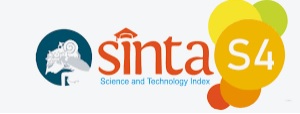Interaksi Dan Komunikasi Berbasis Teknologi Informasi Dan Komunikasi Dalam Pendidikan
Abstract
Salah satu penyebab kegagalan dalam kegiatan belajar mengajar dikarenakan faktor interaksi dan komunikasi di kelas. Faktor interaksi dan komunikasi tidak saja terjadi pada pendidikan dasar saja, namun juga di perguruan-perguruan tinggi, dimana mahasiswanya banyak berasal dari daerah-daerah. Seorang guru/dosen harus mampu memahami dan mengetahui hal-hal yang bersifat konseptual, filosofis dan teknis pada saat proses pembelajaran berlangsung. Juga dapat menciptakan suasana yang nyaman bagi anak didiknya, dibutuhkan kesabaran dan ketekunan yang tinggi dalam memotivasi agar terjadi interaksi proses belajar mengajar sehingga siswa dapat mengembangkan potensi kreatifitas yang dimilikinya.
Kata Kunci: Interaksi, Komunikasi, Pendidikan, Teknologi Informasi dan KomunikasiÂ
Â
AbstractOne of the causes of failure in teaching and learning activities due to interaction and communication factors in the classroom. Factors of interaction and communication not only occur in primary education, but also in universities, where students come from many regions.        A teacher/lecturer should be able to understand and know the things that are conceptual, philosophical and technical at the time of the learning process takes place. Also can create a comfortable atmosphere for students, it takes patience and persistence high in motivate the interaction of the learning process so that students can develop the potential of creativity.
Keywords: Interaction, Communication, Education, Information and Communication Technology
References
Anonim (2013), Interaksi Dalam Pembelajaran, https://nasriaika1125.wordpress.com/ 2013/09/28/, 21 Maret, 2017
Sardiman A.M. (2008), Interaksi Dan Motivasi Belajar Mengajar. Jakrta: Raja Grafindo Persada.
Anonim (2014), membangun-komunikasi-antara-guru, http://www.eurekapendidikan.com /2014/10/, Disalin dan Dipublikasikan melalui Eureka Pendidikan, 21 Maret 2017
Roestiyah N.K. (1994), Masalah Pengajaran Sebagai Suatu Sistem, Bandung: Rineka Cipta.
Bahar (2016), Distance Learning Based E-Learning Operational Model For Student Non-Regular, International Seminar on Electronic & Mobile Learning 2016, Postgraduate Program - Universitas Negeri Jakarta, pp.417-423
Jenkins M., Hanson J. (2003) e-Learning Series: A guide for Senior Managers, United Kingdom: Learning and Teaching Support Network (LTSN) Generic Centre.
Ally M. (2004), Foundations of Educational Theory for Online Learning (Terry Anderson & Fathi Elloumi, eds.), Canada: Athabasca University.
Stone, David E., Koskinen, Canstance L. (2002). Planning and Design for High Tech Web-Based Training, Boston: Artech House
Cole, Jason (2005), Using Moodle, USA: O’Reilly
How To Cite This :
Refbacks
- There are currently no refbacks.











